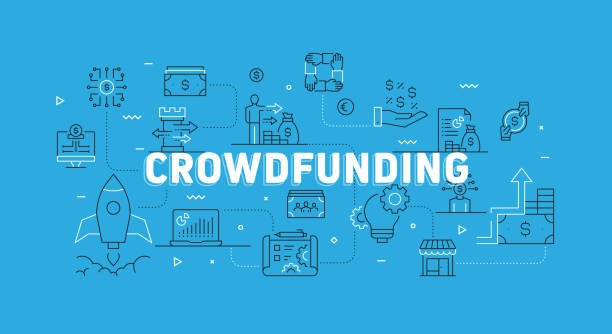Have you ever had a fantastic idea for a project that could change the world? It could be an invention, creative project, a piece of art, or a new game you want to create. You have the talent and the skills to make it happen, but you need the funds to get started. Well, that’s where Kickstarter comes in!

Introduction to Kickstarter
Kickstarter is a website that allows creators like you to make crowdfunding projects and get the funding they need to realize their ideas. People worldwide can support your project by pledging money, and in return, you offer them rewards or perks. These rewards range from a simple thank-you note to a limited edition version of your final product.
The best part? You get to keep the funds you raise regardless of whether you reach your funding goal. However, you need to reach your goal to be able to deliver the rewards to your backers. That’s why it’s essential to set a realistic funding goal that you can achieve.
Why Kickstarter is a great platform for raising funds quickly
Kickstarter has many supporters who are always looking for new and exciting projects. Its platform puts creators in direct contact with their target audience, allowing them to gain exposure and build a fan base. Promoting your campaign on social media and other channels can increase your chances of reaching your funding goal quickly.
Furthermore, Kickstarter takes care of the payment processing for most campaigns and ensures that you receive your funds within two weeks of your campaign ending. This means that you can focus on creating your project without worrying about the financial aspect.

The Power of a well-defined project Idea and its impact on campaign success
Before you launch your Kickstarter campaign, you must have a well-defined project idea that resonates with your target audience. A vague or poorly thought-out idea will not attract backers, no matter how engaging your video or description is.
Identifying your unique selling proposition (USP)
Your unique selling proposition (USP) sets your project apart. It’s what makes it unique, exciting, and worth backing. To identify your USP, consider the following questions:
– What problem does your project solve?
– What makes your project different from other similar projects?
– What benefits does your project offer to backers?
You can craft a clear and concise USP that will attract potential backers by answering these questions.

Validating your project idea through market research
Market research is essential to validate your project idea and ensure that there is a demand for it. You can use surveys, focus groups, or social media analytics to gather feedback from your target audience. This feedback will help refine your idea and make it attractive to potential backers.
Setting a realistic funding goal and timeframe to reach $1000 quickly
One of the most crucial aspects of a successful Kickstarter campaign is setting a realistic funding goal. Your funding goal should be enough to cover all the costs associated with creating and delivering your project, including materials, labour, and shipping.
How to determine your funding goal
To determine your funding goal, you must create a detailed budget for all expenses. Be realistic and conservative in your calculations, and don’t forget to factor in Kickstarter’s fees (5% of the total funds raised) and payment processing fees (3-5% of the total funds raised).
Choosing an appropriate campaign duration
Your campaign duration should be long enough to attract backers but short enough to create a sense of urgency. Most Kickstarter campaigns last between 30-60 days. Anything less might give you less time to promote your project, while anything longer might cause backers to lose interest.
Crafting an engaging and persuasive project video to attract backers
Your project video is the first thing potential backers will see pre launch page, so making it engaging, persuasive, and visually appealing is essential. Here are some tips on how to create a captivating video:
– Keep it short and sweet (2-3 minutes maximum)
– Tell a story that showcases your project and its benefits
– Show real people using and enjoying your product (if applicable)
– Use high-quality visuals and music
– Be authentic and enthusiastic about your project

Using storytelling techniques to connect with your audience
Your video should tell a story that connects with your audience and inspires them to back your project. Show them why your project is important and how it can improve their lives. Use storytelling techniques such as:
– The hero’s journey – show how your project can help your target audience overcome challenges and achieve their goals
– The emotional connection – appeal to your audience’s emotions by sharing personal anecdotes or stories related to your project
– The vision – paint a picture of the world with your project and how it can make a difference
Writing a compelling project description that highlights the benefits of your idea
Your project description should provide detailed information about your project and its benefits. Here are some key elements of an effective project description:
– Introduction – provide a brief overview of your project and why it’s important
– Detailed description – provide a more detailed description of your project, including how it works, what materials you’ll use, and who will be involved
– Rewards – list the rewards that backers will receive for their support
– Timeline – provide a timeline of when you expect to complete and deliver your project
– Call to action – encourage backers to support your project and share it with their friends and family
How to showcase the value of your project to potential backers
To showcase the value of your project to potential backers, highlight the benefits they will receive by backing your campaign. For example:
– Early access to your product
– Limited edition or exclusive versions of your final product
– Personalized thank-you notes or shout-outs
– Discounts on future products or services
– The satisfaction of helping to raise money to bring an exciting new project to life

Identifying your target audience and understanding their needs and preferences
The first thing to consider when creating a Kickstarter campaign is your target audience. Your target audience is the group of people who will be most interested in your product or service. To identify and understand them, you need to conduct audience research. You can create surveys or polls to gather information about your target audience.
Creating audience personas is another useful technique to guide your crowdfunding campaign strategy. An audience persona is a fictional character who represents your target audience. You can create personas by collecting data on your potential backers’ demographics, interests, and personality traits. By understanding their needs and preferences, you can design your Kickstarter campaign to appeal to them.
Designing attractive reward tiers that offer value and encourage pledges
Another critical factor in creating a successful Kickstarter campaign is reward tiers. Reward tiers offer incentives for backers to pledge towards your campaign. Brainstorming reward ideas is the first step in designing reward tiers. Your rewards should offer value to your backers, and you can do this in many ways, such as by offering exclusive discounts, early access to products, or personalized thank-you notes.
Pricing your rewards strategically is also essential. The price of your rewards should reflect their value, but they shouldn’t be too high that they put off potential backers. Offering several reward tiers at different prices allows backers to choose what they are comfortable pledging.

Building a solid brand identity for your Kickstarter campaign
Creating a strong brand identity is crucial in building trust with potential backers and ensuring the success of your Kickstarter campaign. A strong brand identity should be consistent and recognizable across all marketing materials, such as your campaign page, social media, and email marketing.
Developing a consistent visual identity using your brand colours and logo is crucial in creating a cohesive campaign. Your campaign name and tagline should also be memorable and communicate your project’s main idea and purpose. A strong brand identity will help you stand out and attract potential backers to your campaign.
Utilizing social media platforms to generate buzz and drive traffic to your campaign
Social media and crowdfunding platforms offer a vast audience for promoting your Kickstarter campaign. Choosing the right social media channels for your project is the first step. Consider the social media platforms where your target audience spends most of their time, such as Facebook, Instagram, Twitter, and TikTok.
Creating engaging content to share on social media is also essential in driving traffic to your campaign. By highlighting your unique selling proposition (USP) and sharing updates on the progress of your campaign, you can keep your followers engaged and up-to-date. Additionally, you can leverage social media influencers to promote your project and reach a broader audience.
Leveraging the support of influencers and industry experts to promote your project
Leveraging the support of influencers and industry experts is an effective way to promote your Kickstarter project and gain credibility. To identify relevant influencers in your niche, you need to conduct research on social media or use platforms like BuzzSumo or Followerwonk.
After identifying relevant influencers, you should craft a compelling pitch for influencer collaborations. Your pitch should highlight your project’s unique selling proposition and explain how it aligns with the influencer’s interests and values. Additionally, offering incentives such as early access to your product or exclusive discounts can encourage influencers to support your campaign.

Creating an effective pre-launch strategy to build anticipation for your campaign
Before you launch your Kickstarter campaign, there are a few things you can do to build excitement and anticipation for your project. One of the most important things you can do is to build an email list of interested supporters. These people are your potential backers, and you want to ensure they’re aware of your project well before your launch date. You can collect email addresses by creating a landing page showcasing your project and offering visitors a sign-up form. Share the link to your landing page on social media and everywhere else you can to attract interested people.
Another thing you can do to build anticipation is to share sneak peeks and exclusive updates with your audience. Post regular updates about your project on social media, and give your followers a behind-the-scenes look into your creative process. This will excite your supporters about your project’s progress and’ll be more likely to back your project once you launch. You can also offer early-bird discounts or other incentives to your email subscribers to encourage them to back your project once it’s live.
Optimizing your Kickstarter campaign page for search engine visibility
Now that you’ve built up some excitement for your Kickstarter campaign, optimising your campaign page for search engine visibility is time. The goal here is to ensure your your project page shows up in search results when people are looking for similar projects. You’ll need to implement SEO best practices for your campaign page to do this. This includes optimizing your headlines and descriptions, including relevant keywords, and creating high-quality content that engages with your potential backers.
You can also utilize keywords and phrases to improve search rankings. This means including specific words or phrases in your campaign content that people will likely search for. For example, if you’re launching a new board game, you might want to include keywords like “fun family games” or “strategy board games” to attract people interested in those types of games. Including these relevant keywords will increase your chances of appearing in search results.
Implementing paid advertising strategies to boost your campaign’s reach
In addition to building anticipation and optimizing your campaign page for search engine visibility, you can implement paid advertising strategies to boost your campaign’s reach. Various advertising platforms and options are available, but some of the most popular include Facebook Ads, Google AdWords, and Reddit Ads. These platforms allow you to target specific audiences based on interests, demographics, and other targeting options. This means you can reach people who are most likely to be interested in your project.
Remember to track your ROI (return on investment) when setting an advertising budget. This means monitoring how much money you’re spending on ads and how much money you’re making back from people backing your project. This will help you determine if your ad spend is worth it. If you are still looking for a good ROI, make adjustments to your targeting and ad creative until you find a winning combination.
Hosting live events or webinars to engage with potential backers
Another great strategy for building excitement for your Kickstarter campaign is hosting live events or webinars to engage with potential backers. This allows you to showcase your project, answer questions, and build a personal connection with your audience. When planning and promoting live events, choose a venue that can accommodate your audience size and promote your event through social media and other channels. For webinars, choose a platform like Zoom or GoToWebinar that allows you to host interactive sessions with your audience.
During your live events or webinars, make sure to engage with your audience and answer any questions they have about your project. You can also use this opportunity to offer exclusive discounts or other incentives for people who back your project during or immediately after the event.
Monitoring your campaign’s progress and adjusting your strategy accordingly
Finally, once your Kickstarter campaign is live, monitoring its progress and adjusting your strategy accordingly is essential. This means tracking key performance metrics like conversion, click-through, and backer demographics. Use this data to learn which marketing tactics are working and which ones need improvement. If you need to get the desired results, adjust your promotional efforts based on data-driven insights.
Communicating with backers and providing regular updates on your project status
Communicating with your backers is one of the most important parts of running a successful Kickstarter campaign. You want to build a strong relationship with those who believe in your project and keep them updated on your progress. This not only shows your dedication to your project but also builds trust.
Establishing a communication schedule
Create a timeline of updates that will be communicated to backers. This could include weekly or bi-weekly progress reports, new photos of your project, or videos of it in action. Also, interact with backers through the Kickstarter comments section, respond to inquiries, and engage with your community.
Sharing milestones and setbacks transparently
Be honest and keep your backers informed about what’s happening at every stage of your project. Celebrate milestones with them and let them know about any obstacles or setbacks you face. This creates a sense of community and transparency and shows that you’re dedicated to seeing your project completed.

Addressing common challenges and obstacles faced by Kickstarter Creators
Creating a Kickstarter campaign may seem easy, but it comes with its own set of challenges. Anticipating and overcoming these obstacles requires careful planning and attention to detail. You can learn from other experienced Kickstarter creators.
Anticipating and overcoming hurdles during your campaign
Plan to have a backup plan for anything that could go wrong. For instance, if you’re creating tech gadgets, have a contingency plan for production problems. If you’re creating clothing, factor in shipping delays. Be prepared for the worst, and brainstorm different scenarios and potential solutions.
Learning from the experiences of other successful creators
Take time to read up on the experiences of other successful Kickstarter creators. Study their successful campaigns and learn from the challenges they faced. By learning from their experiences, you can avoid some of the common Kickstarter pitfalls.
Preparing a post-campaign plan for fulfilling rewards and managing funds
The real work begins after running a successful campaign: fulfilling rewards and managing funds. You must meet your commitments to backers and provide them with the promised rewards. Properly managing funds is essential, ensuring you have enough money for production and shipping costs and a budget for unexpected costs.
Developing a timeline and budget for reward fulfilment
Create a timeline for reward fulfilment, taking into account each reward tier you offered and its expected delivery date. Determine a detailed budget for each reward that must be fulfilled, including production and shipping costs. Factor in any unexpected expenses and devise a contingency plan to deal with them.
Communicating post-campaign updates to backers
Keep backers informed post-campaign about the status of their rewards, when they can expect to receive them, and any roadblocks you might encounter. Also, address any concerns the backers may have and give them updates on your project.
Analyzing your campaign’s success and identifying areas for improvement
After your campaign is complete, take some time to conduct a post-mortem analysis. It’s vital to see what worked well and what didn’t. This will help you identify how to improve future campaigns continually.
Conducting a post-mortem analysis of your campaign
Analyze every aspect of your campaign, from the messaging to the rewards. Identify what worked well and what didn’t work. Assess the components that contributed to the successful crowdfunding campaign, including social media, email marketing, videos, and pledge tiers. Take note of the most popular pledges.
Gathering feedback from backers and supporters
Request important feedback to identify areas of your campaign that need improvement. Talk to your backers and get their thoughts on your campaign. You may receive suggestions that can make your project better.
Case studies of successful Kickstarter campaigns that raised $1,000 quickly
To increase your chances of success on Kickstarter, gain inspiration and insights from those who have already been successful in raising a quick USD1000 on the crowdfunding platform before. Here are some strategies employed by successful Kickstarter creators:
Analyzing the strategies used by successful creators
1. Compelling rewards – Offering compelling and unique rewards can motivate backers to support your campaign. Exciting rewards that resonate with backers will help to turn them into loyal followers.
2. Captivating campaign video – An excellent campaign video is key in making your project stand out. It should feature a straightforward, clear message and be approached with a storytelling mindset.
3. Marketing – Successful Kickstarter campaigns rely on astute marketing. Determine where your audience is active and engage them. Share your project on social media, create email marketing campaigns, and leverage digital marketing and PR opportunities.
Drawing inspiration and lessons from their experiences
Don’t be afraid to learn from others, even those who don’t operate in your industry. Examine a variety of campaigns from different industries and see what they did to find success. You may have something in common with the campaigns that did well.
FREQUENTLY ASKED QUESTIONS:
What percentage of Kickstarter projects have been successful?
The pledges for the project were more than $5bn, with an impressive 39% success rate. The most successful dance category, with a 61% success rate, is dance. There are over 204,000 successfully funded projects currently in use.
What makes a Kickstarter successful?
All successful back-to-basket campaigns need to have good planning. You can only build great products or services by knowing the exact requirements and setting clear objectives.
How do you make a Kickstarter go viral?
Show some of your most popular ways to promote Crowdfunding campaigns—first thing first, then the money. Use Reservation Funnels for Building your Email List. Connecting influencers. Create incentive programs using Kickbooster. Publish Organic Content on the scroll feed Social Network.

What happens to the money if a Kickstarter project fails?
Suppose the Kickstarter and project funding fails. The pledge remains in their hands. Refunds can be refunded via bank transfer or by credit card.
What are the elements of a successful Kickstarter campaign?
All successful Kickstarter campaigns must have a solid plan. You’ll only be how to be successful on kickstarter and capable of producing a quality product or service if you understand the exact needs of your supporters.
Conclusion
In conclusion, launching a successful Kickstarter campaign requires a well-defined project idea, a realistic funding goal and timeframe, an engaging video, and a persuasive project description. By understanding your target audience, designing attractive rewards, using creative projects, building a solid brand identity, utilizing social media platforms, and leveraging the support of influencers, you can create a Kickstarter campaign that earns you your first $1000 fast.
